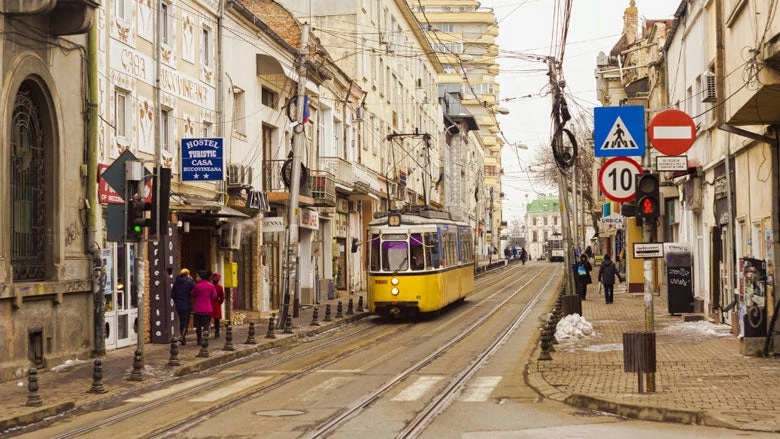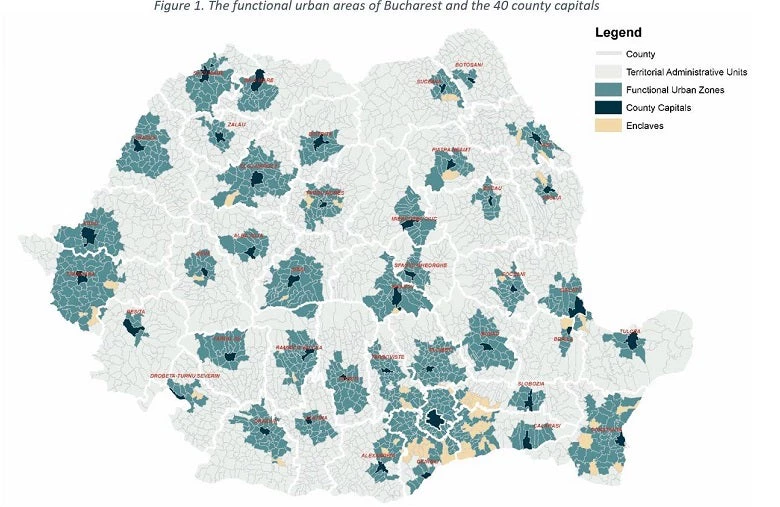
When looking at the findings from a recent report, you will be struck to learn that more than 15% of people in Romania would consider moving to Cluj-Napoca. Today, however, this Functional Urban Area (FUA)* represents just 2.3% of the total population in the country. Cluj-Napoca is not alone in serving as an attractive urban destination – many people also expressed interest in moving to Bucharest (14.4%), Timișoara (11.9%), Brașov (11.5%), Sibiu (5.16%), or Iași (4.3%).
So, what, then, are the local administrations in these dynamic FUAs doing to attract these people?The unpleasant answer is: not much, unfortunately.
Nor is the central government. Although cities are critical for the performance of the Romanian economy, there is no coherent National Urban Development policies in place, nor are there any state-funded programs targeting cities.
Unless urban development becomes a priority for the national government, it is likely that many growth and investment opportunities will be missed in the coming years.
One thing that most Romanians probably don’t know is that 90% of firm revenues in Romania are generated by the functional urban areas of Bucharest and the 40 county capitals (see map below) – meaning if these urban areas do not function well, neither does the Romanian economy as a whole.
Unfortunately, these FUAs do not function well.

While most of the national population growth in recent years has taken place in the suburban and peri-urban areas of these FUAs, there have been almost no efforts towards integrating metropolitan spatial planning in ways that could ensure that new people and investments are accommodated in an efficient and sustainable ways. Little has been done to help attract more business or investment through improved urban management. Few steps have been taken to develop metropolitan-level infrastructure or metropolitan public transport systems – actions that would enable a higher influx of investments and enhanced mobility for people, goods and services. Close to nothing has been done to enable land and housing markets to work more efficiently and effectively.
While 32.5% of new housing units built between 1990 and 2015 in Romania where constructed in the suburban and peri-urban areas of these FUAs, there has been no concerted effort to develop metropolitan infrastructure or public transport systems that would enable the efficient movement of people. Despite 20% of national firm revenues being generated in the suburban and peri-urban areas of these FUAs, virtually no integrated, metropolitan business infrastructure has been developed.
Continuing to grow like this will come at a price.
Today, Romania has the potential to lift more people out of poverty and ensure that growth is more inclusive and translates into a better standard of living and more opportunities for all Romanian citizens. Growth, at 5.6% in the first quarter of 2017, was the highest rate in the European Union. Improving the economic performance and attractiveness of urban areas in the country can help ensure long-term, sustainable growth – but this requires national and local governments to make in concerted efforts to promote metropolitan development, greater decentralization, and improved cooperation and coordination between various stakeholders.
More firms and more jobs can help attract people to urban areas in Romania; improved urban integration and management can help ensure that they stay.
To find out more about the story of Romania’s cities, take a look at the “Magnet Cities” report in English and Romanian.
* Functional Urban Areas (FUAs) were defined using an OECD-EC methodology and are taken to comprise the urban area per-se and the catchment area from which the urban area draws its labor force. Thus, a FUA includes a center city and the localities from where at least 15% of the labor force commutes to work in the center city.


Join the Conversation